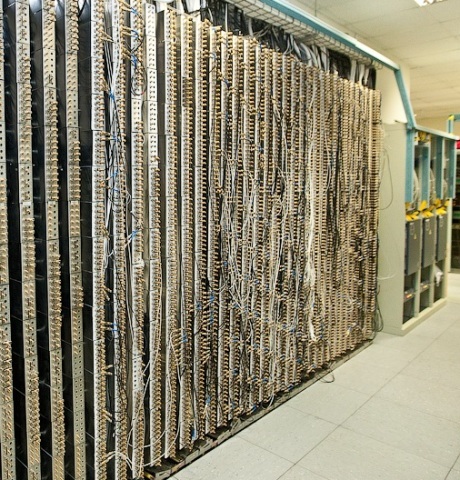Categories: How does it work
Number of views: 26676
Comments on the article: 0
How Mobile Cellular Communication Works and Works
It is hardly possible today to find a person who would never use a cell phone. But does everyone understand how cellular communications work? How does what we all get used to work and work? Are signals transmitted from base stations about wires, or does it all work somehow differently? Or maybe all cellular communication functions only due to radio waves? We will try to answer these and other questions in our article, leaving the description of the GSM standard beyond its scope.
At the moment when a person is trying to make a call from his mobile phone, or when they start calling him, the phone is connected via radio waves to one of the base stations (the most accessible), to one of its antennas. Base stations can be seen here and there, looking at the houses of our cities, at the roofs and facades of industrial buildings, at high-rise buildings, and finally at the mast masts specially built for the stations in red and white (especially along highways).
These stations look like rectangular boxes of gray color, from which various antennas stick out in different directions (usually up to 12 antennas). Antennas here work both on reception and transmission, and they belong to the mobile operator. The antennas of the base station are directed in all possible directions (sectors) in order to provide “network coverage” to subscribers from all sides at a distance of up to 35 kilometers.

An antenna of one sector is able to serve up to 72 calls simultaneously, and if there are 12 antennas, imagine: 864 calls can basically be served by one large base station at a time! Although usually limited to 432 channels (72 * 6). Each antenna is connected by cable to the control unit of the base station. And already blocks of several base stations (each station serves its part of the territory) are connected to the controller. Up to 15 base stations are connected to one controller.

The base station, in principle, is able to operate on three bands: a 900 MHz signal penetrates better into buildings and structures, spreads further, which is why this band is often used in villages and fields; a signal at a frequency of 1800 MHz does not spread so far, but more transmitters are installed on one sector, therefore, such stations are often installed in cities; finally 2100 MHz is a 3G network.
There can be several controllers, of course, in a settlement or district, therefore controllers, in turn, are connected by cables to the switch. The task of the switch is to connect the networks of mobile operators with each other and with city lines of ordinary telephone, long-distance and international communications. If the network is small, then only one switch is sufficient, if large, two or more switches are used. The switches are interconnected by wires.

In the process of moving a person talking on a cell phone along the street, for example: he walks, rides in public transport, or moves in a personal car, his phone should not lose the network for an instant, you cannot end the conversation.
Continuity of communication is obtained due to the ability of the base station network to very quickly switch a subscriber from one antenna to another while moving from the coverage area of one antenna to the coverage area of another (from cell to cell). The subscriber himself does not notice how it ceases to be connected to one base station, and is already connected to another, how it switches from the antenna to the antenna, from the station to the station, from the controller to the controller ...
At the same time, the switch provides optimal load distribution according to a multi-level network scheme to reduce the likelihood of equipment failure. A multilevel network is constructed as follows: cell phone - base station - controller - switch.

Suppose we make a call, and now the signal has already reached the switch. The switch transmits our call to the destination subscriber - to the city network, to the international or long-distance communication network, or to the network of another mobile operator. All this happens very quickly using high-speed fiber optic cable channels.
Further, our call arrives at the switch, which is located on the side of the subscriber receiving the call (called by us). The “receiving” switch already contains data on where the called subscriber is located, in which network coverage area: which controller, which base station. And so, the network begins to poll from the base station, the addressee is located, and “a call arrives” on his phone.
The whole chain of events described, from the moment of dialing to the moment the call is heard on the receiving side, usually lasts no more than 3 seconds. So today we can call anywhere in the world.
See also at i.electricianexp.com
:
